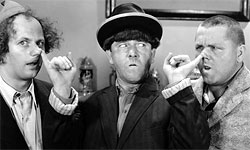
I even feel this way in my job a lot of times. Since I know a lot about Internet marketing and search engine optimization (SEO), I forget that a lot of people are just not so familiar. If you are good at something, it is easy to forget that the world is made up of all types and that the more you specialize, the more you become blinded. Addressing this with clients is an interesting challenge to me, because I frequently provide concrete evidence to show them just how wrong they are and how much business they have been missing. Then I have to present it in a way that does not make them feel stupid for not seeing it and addressing it sooner. People hate feeling stupid, and I don’t always have such a soft hand at pointing things like this out. I am that guy who will tell people what they need to hear rather than candy-coating a turd and telling them what they want to hear. I am a great marketer but because of that, I lack the wasteful schmoozing that some people expect to get when they spend a lot of money. This is my example of being so focused that I don’t see so well. I hope that you can realize it if there are instances like this in your work, too. Recognizing it is a good step in the right direction … I think … or rather, I hope.
It is common to use bad judgment or to be complacent when addressing matters within your own industry. It is why people use the analogies of a cobbler with barefoot children or a plumber with leaky pipes. It is easy to just think we are so good at something that we know how long we can put a task off before things break. It can also be easy to think we are doing all the right things, while we are actually just making things worse. Allow me to share an extreme real life example.
Jeff is Too Good at His Job to be Sick
I am reminded of many years ago when I had a roommate who was a physician. He woke up one morning and he was very sick. He could barely stand up, but of course he didn’t need a doctor. He figured that since his abdomen hurt that he just needed some antacid. He swigged a big dose of about three different over-the-counter antacids and headed to work.
Later that day as he was doing rounds at the hospital, it got worse … a lot worse. I got a call from an old school friend’s mother that evening. It kind of surprised me because I had not spoken to this woman in the prior 15 or more years. She was calling for professional reasons, as she is a nurse who worked with Jeff (the roommate). She called to let me know that while Jeff was at work, he had become so sick that he needed an emergency surgery. His appendix had perforated and he was in really bad shape. He made the mistake of diagnosing himself and it finally took a doctor friend to force him to go to the emergency room where a formal diagnosis was made. His condition was worsening fast, and if not for the intervention, it would have been life-threatening in very short order.
Jeff is a sub-specialist with over 15 years of post-secondary medical training from some of the most prestigious medical schools in the world. He is extremely talented in his field of medicine, but he was just too close to see the problem. I am not a doctor, and even I knew enough to tell him to stop by the emergency department to drink a GI cocktail just to see if the pain went away. If not, it would be a sign of something worse. He didn’t take my tip, nor several coworkers advice throughout the day, and he suffered a lot for it.
Jeff’s instance makes a good example of just being so good at a job or too closely involved to have good judgment. I see business instances similar to this often enough to believe that most people can find a similar oversight in their work.
My work involves a lot of different markets, and I am always thinking about how to best reach my clients’ prospective customers. Not so unlike Jeff, I am my own worst patient. I think a lot of us are this way but we become too blind to recognize it. We get so wrapped up in our respective jobs that we put things off or make costly mistakes.
It is very likely that you are overlooking a lot of potential in your business, too. Recognizing the ailment is an important step to recovery. Don’t be a “Jeff”! Putting things off will often make for a much longer recovery.


